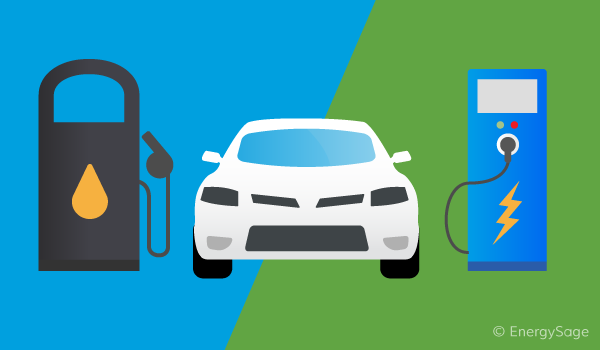What is a hybrid car?
How do hybrid cars work?
Advantages and disadvantages of hybrid cars
Different types of hybrid cars
Hybrid cars are powered by an internal combustion engine and an electric motor. They are more environmentally friendly vehicles that save more fuel compared to conventional cars.

Plug-in hybrids are halfway between conventional cars and fully electric vehicles. An electric motor and an internal combustion engine powers these cars but an external electrical source “plug-in” charges their batteries.
How do hybrid cars work?
The vehicle fulfills the principle of working with high efficiency without the need for any external power. In this system, which forms the basis of hybrid technology, the electric motor is bound with the internal combustion engine in series or in parallel. Further, the hybrid power regulator in the system provides the connection between the battery and the electric motor and feeds the vehicle’s power grid.
The high-voltage lithium-ion battery stores the required energy in the electric motor. Some of the energy lost during deceleration. Also, it comes back by recycling and stored in the lithium-ion battery. Moreover, the moment of starting and taking off, where fuel consumption is highest in vehicles, becomes maneuvers.
Advantages and disadvantages of hybrid cars
The advantages of hybrid cars are:
- Firstly, they are eco-friendly:
The combination of gasoline engine and electric motor in hybrid cars reduces dependency on fossil fuels and carbon dioxide (CO2) emissions.
- Secondly, they have financial convenience:
Many tax breaks and incentives are available to make hybrid cars more affordable.
- Thirdly, they have regenerative braking system:
The energy from the braking action is captured and used to charge the battery. With this system, you can save time by eliminating the time spent regularly charging the battery.
- Fourthly, they have higher resale market value:
Thanks to their increasing popularity, the used market values of hybrids are above average.
The disadvantages of hybrid cars are:
1. Higher cost
They are more expensive than ordinary petrol cars. In addition, the technology they use leads to higher maintenance costs.
2. Less power
The gasoline engine and electric motor combination used in hybrid cars is less powerful than many fossil fuel powered engines.
3. Lower handling
The mechanism of hybrid vehicles is more complex than normal cars. Hybrid cars have smaller engines and batteries as manufacturers try to avoid the extra weight. There is also less support in the suspension and body.
4. High voltage batteries
In the event of an accident, the presence of high voltage increases the risk of electric shock to passengers and complicates the work of rescuers.
Different types of hybrid cars
- Parallel hybrids
These are the most common type of hybrid, where the electric motor and gasoline engine are pair to a common transmission. A gasoline engine, electric motor or a combination of the two power these vehicles directly. Kia’s Niro uses the parallel hybrid system.
- Series hybrids
In this design, the gasoline engine is not connected to the wheels and is only used to generate electricity from a generator that charges the battery. Furthermore, all driving power is provided by the electric motor.
- Plug-in hybrids
In this design, the battery can be charged by plugging it into an external power source. Its battery is quite large, so people can complete daily journey using only electrical energy. After running out of electricity, the vehicle runs as a normal parallel hybrid. In addition, Kia’s Niro Plug-In Hybrid and Optima SW Plug-In Hybrid are great options for those looking for a plug-in electric hybrid.
- Mild hybrids
In this hybrid type, the electric motor can’t move the vehicle on its own. Gasoline or diesel engine does most of the work. The electric motor assists the gasoline engine in reducing fuel use, increasing performance, or both. Lastly, the new Sportage lineup now also features Kia’s mild hybrid powertrains.











